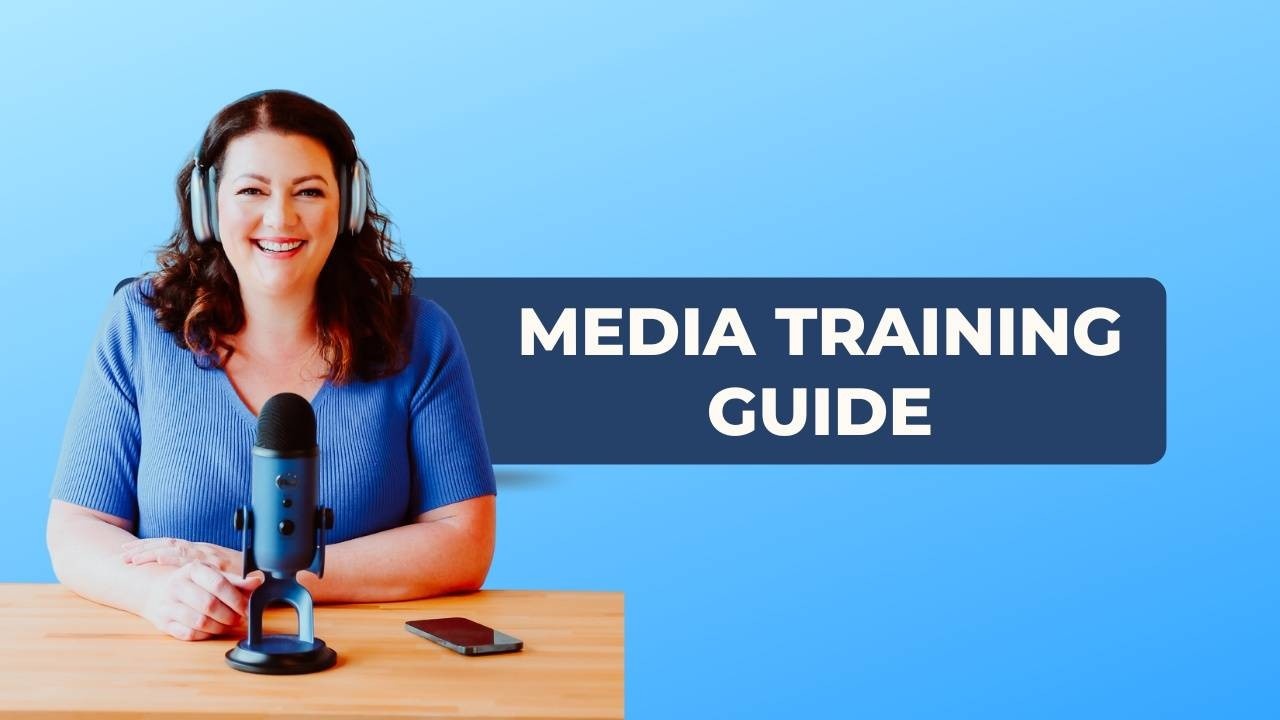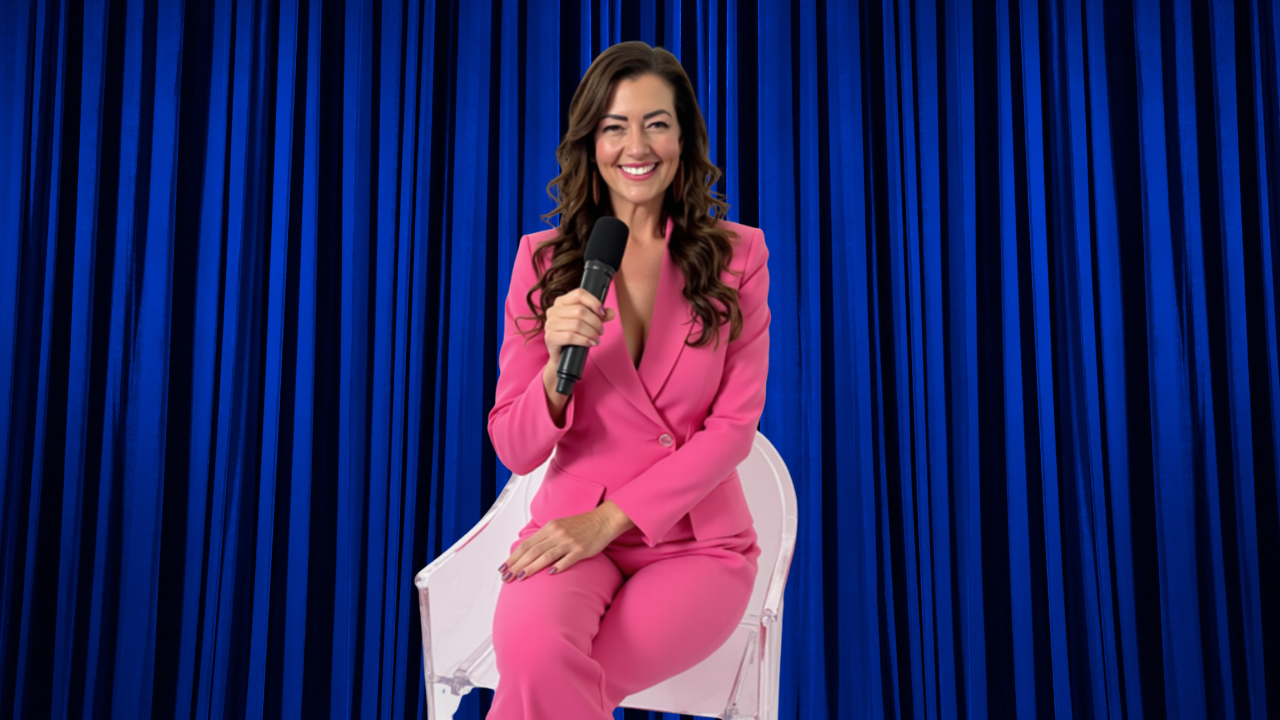Media Interview Training Guide

by Jaimie Abbott
Congrats!
You’ve landed an interview with one of your targeted media contacts…amazing job. Now it’s time for some media training.
Careful planning and preparation makes all the difference. You want to ensure that you stay on message AND provide the editor with exactly the right sound bites to make for a winning story.
Whether you’re an experienced media performer or not, you can benefit from a little pre-interview run through. Feel free to use this guide as inspiration for your own media prep checklist.
CLIENT PREP
In order to be comfortable, confident and clear, you need to be prepared. Develop message points or full responses prior to the interview. You may want to do a mock interview beforehand, record your answers and then tailor responses for the specific opportunity.
MEDIA BRIEF BREAKDOWN
Background information on how this opportunity came about
Reporter + outlet info
Key message points
Potential interview questions
DEFINE THE NO-GO AREAS
Decide what, if anything, is out of bounds for the interview so that you can set the expectation or be clear workaround language. It’s okay for certain topics or questions to be confidential or proprietary.
EDITOR BACKGROUNDER
My clients love to know a bit about who is going to interview them – so I prepare a brief overview on the interviewer. A bio, a few links to recent articles, social media links – all will help you feel more comfortable with the person on the other line. Who knows – you might discover a commonality that makes a huge difference in establishing rapport.
PLAN AN ICE-BREAKER
That backgrounder will come in handy when it comes to creating a nice vibe for the interview. Before the actual interview takes place, consider a possible icebreaker like “I recently read your article on [topic] and really enjoyed your take on [XX]. or I noticed you’re from [city/state], I have some family there and visit often.”
ATTIRE
For TV and video chat interviews, you’ll need to think about your wardrobe and makeup. We want the host and audience focused on what you are saying, not what you are wearing to say it.
For TV, I recommend you wear solids, never patterns or busy prints, never black and white, as they can be difficult to light.
Dress to reflect your profession and/or brand personality. Sample guidelines: corporate, professional skirt or pant suit, fitness > branded gear that allows for movement/demonstration.
MOCK INTERVIEW
A common fear during interviews is rambling or straying off topic – particularly when nervous. To ensure your answers are succinct and effective, prep with a mock interview. Get someone to ask you questions, including ones you prepare yourself. Start by asking easy questions for warm up, and then throw a few curve balls so that you practice navigating from one question back to their talking points. Practice navigating difficult questions (money, leadership changes, stats, etc.) as those tend to trip people up the most.
In addition to practicing answers, have a standard response should a question be raised that you don’t feel equipped to answer. While you should be prepared and able to speak to multiple areas of inquiry, you should also feel comfortable saying, “I don’t know, let me get back to you once I’ve confirmed.”
Then, quickly bridge to back, like “But what I do know is that [insert 1 of your 3 message points].”
It might be cringe-worthy, but record yourself and play it back – listen to how you speak, carry yourself, your use of “um or like” or other nervous phrases.
Then keep practicing – hand motions, facial expressions, smiles – body language is as important as the response.
DURING THE INTERVIEW
When it comes time to do the actual interview, you may want to record it. I often will be there when my client is doing the interview.
FOCUS ON THE GOAL
Remind yourself that the goal is not to be the reporter’s best friend, or to aim to control or takeover the interview. This is an opportunity to get accurate information and hopefully positive attention that highlights key brand messaging – the goal is to make it to the final story.
At the same time. your goal is not the same as the person interviewing – they are looking for sources that will help their audience.
MAKE ZERO ASSUMPTIONS
Remind yourself that the level of prep on the reporter’s side also varies, and so never assume the interviewee has previous knowledge of you or company background. As a PR Specialist, I never assume media has visited my client’s website or read the supplied media brief. Reporters often cover stories because of their availability or their editor has assigned it to them – and increasingly that means little research has been done ahead of time – the writer is there to gather the information and get the quote – not to shine the spotlight on you (unless it’s a feature story of course!).
TAKE NOTHING PERSONALLY
Set the expectation that just like in life, you’ll come across every type of media personality – some will be warm and friendly, others all business – remember that ultimate goal – we don’t want have the editor’s personality or tone define the interview.
STAY ON MESSAGE
If the reporter asks 3-4 questions, dive deep into the one that most aligns with key messaging. When responding, don’t repeat negatives or negative premises in the question. Anytime you’re rebutting a negative premise in an interview and its edited, you’re asking for trouble because only the edited portion/negative premise could make it into the story.
BE THE EXPERT
Remind yourself that they are being invited to speak because they are an expert and that at the end of the day, the most important thing is to be authentic and allow that passion and expertise to shine through.
CLIENT CHEAT SHEET
It’s okay to…
- Ask the reporter for clarification if you don’t answer the question. Don’t answer if you’re unclear on the question. You don’t want things to get misinterpreted.
- It’s okay to pause and think before you speak. The interview is not a race and there’s no need to feel pressured. Most people ramble when nervous. Slow down.
- Not agree with the reporter. If you don’t agree with a statement that the reporter says, politely say so and backup your answer to set the record straight. Staying silent may translate into them thinking you agree with them.
- It is okay to say “no (thank you)” if a journalist asks you a question you’re uncomfortable with answering (asking you to speculate for example). Kindly let them know you aren’t comfortable speaking to that and then segue into focusing on one of your main 3-5 points again. Anticipate difficult questions, and plan an answer that won’t hurt you.
PRACTICE EXERCISE
If you could write the first paragraph of the article yourself – what would you want it to say?
You can also take into account different types of interviews. For example, if you’re a beauty brand, you may have slightly different thoughts on this depending on if you’re being interviewed by Allure versus Entrepreneur.
Take the audience into account. If you had to write down your top 3 messages (10 words each), what would you want to say?
Throw subject matter details out the window – this should be focused and concise. Brainstorm on messages that answer the most obvious questions to your business as it relates to your who, what, when, where, why and to the reporter’s topic.
Key messages should resonate and/or help:
THE MEDIA
THE BRAND/COMPANY
THE TARGET AUDIENCE YOU ARE SPEAKING WITH
If message points don’t hit all 3, go back to the drawing board.
POST INTERVIEW
SEND A THANK YOU
Send a thank you to the journalist. Provide official responses to any follow ups, send your headshot, logos, product images and request to know an anticipated publication date (they may not do or even know this, so be prepared to keep a look out for the story)
RECAP
Give yourself a review, identify any improvements for future or tweaks to messaging. Don’t forget to celebrate as well – on a job well done!


